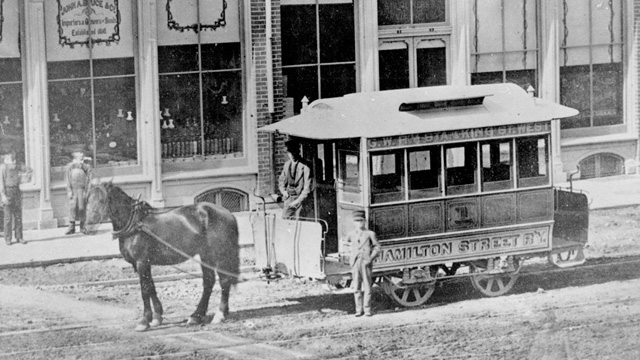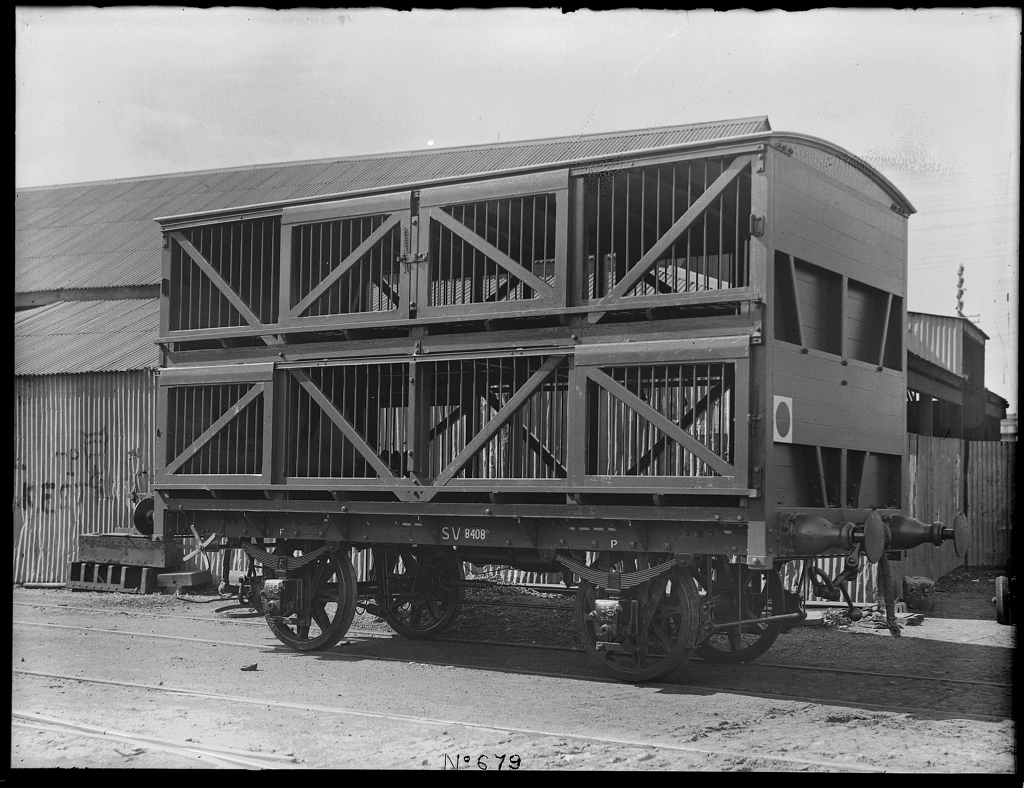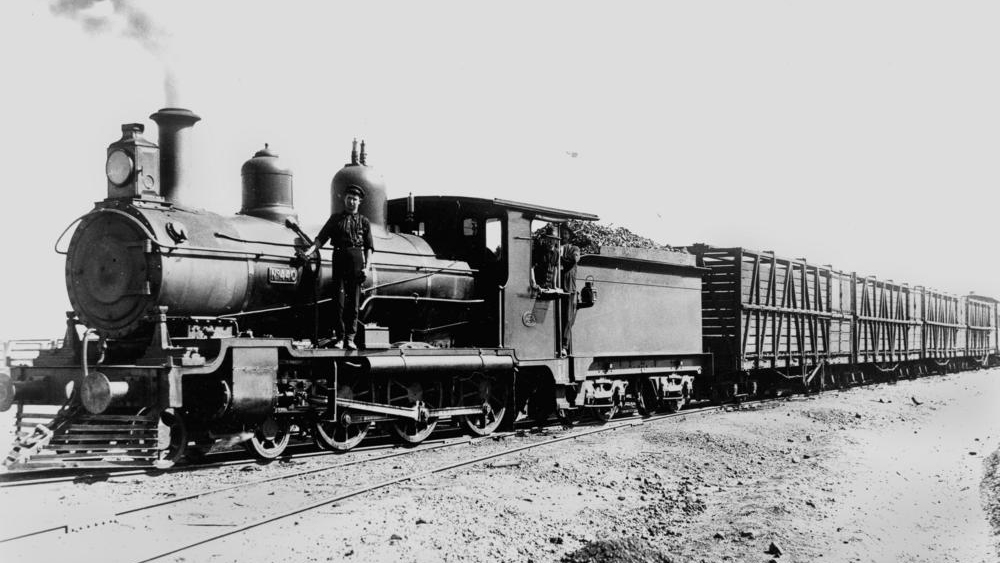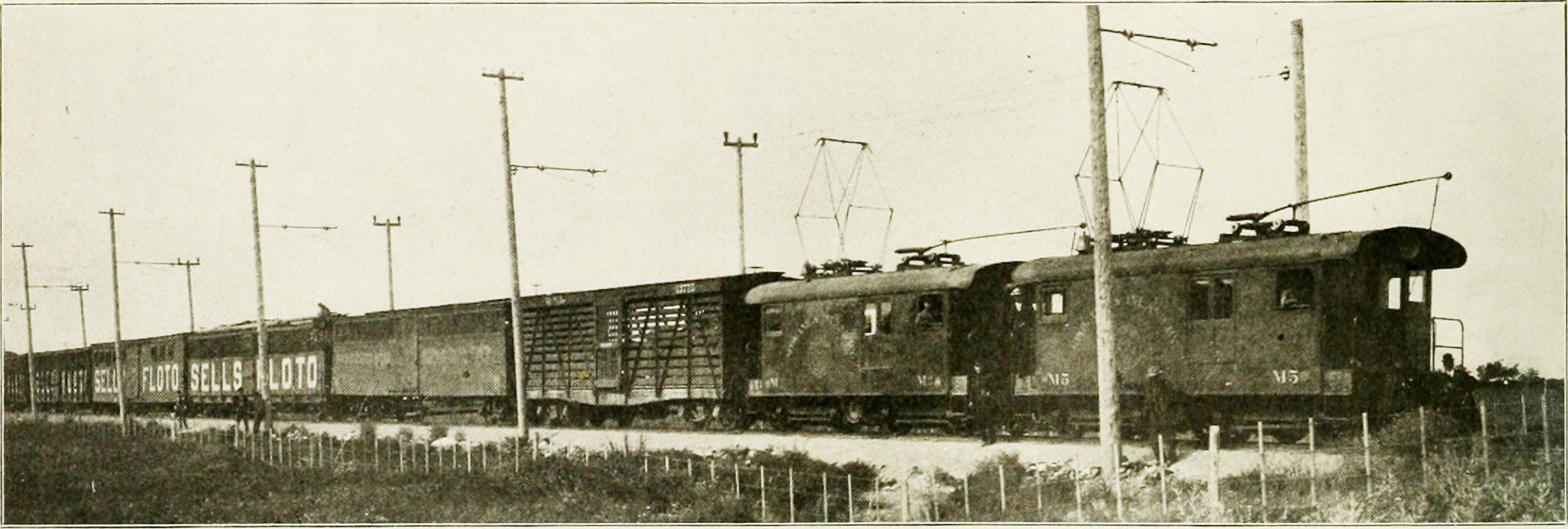WE ARE MANY.
WE ARE RAILFANS.

Furry freight - A history of animals on trains
Railfan-Joe
May 13th, 2021
When it comes to the carriage of passengers via train, we naturally think of human beings, traveling the rails for businesses or pleasure in rolling stock suited to such. Seats, heating, cooling, buffet cars, leg room and luggage storage have moulded the space and size of passenger carriages since the 1800s but aren't the only vehicles to carry living things. For as long as railways and railroads have carried people, they have also carried animals. We take a look at the relationship livestock, pets and other kinds of animal have had with the railways over time and the kinds of vehicles that have hosted them on their journeys.
To begin with, the relationship between animal and railway was one of traction. Some of the world's earliest railways and tramways were hauled by horse power and similar to canal barges were eventually replaced by steam or electric power as technology progressed. But as the importance of railways increased with regard to freight, it was not long before their use in transporting livestock was recognised and in the 1830s, the first 'stock cars' (USA) or 'cattle waggons' (UK) were built specifically with animals in mind.
 This image shows one of the first horse drawn Hamilton Street Railway cars on its route on King Street East in Hamilton, Ontario. Credit: Local History & Archives Hamilton Public Library via Flickr.
This image shows one of the first horse drawn Hamilton Street Railway cars on its route on King Street East in Hamilton, Ontario. Credit: Local History & Archives Hamilton Public Library via Flickr.
Of course these railway vehicles were vastly different to those that were transporting the first human passengers and instead of seating and luggage compartments, featured a flat floor with open louveres to allow all important air to flow in and out of them, thus keeping the livestock well ventilated. The USA first pioneered the carriage of livestock long distances across the country and certain railroads like the Baltimore & Ohio had cars that were open top, closed and those that could be altered to carry typical freight or livestock depending on demand. Double-decked cars were used to transport smaller livestock like sheep and pigs. Despite these specialist vehicles, conditions were often terrible for the animals with heat, thirst and starvation common issues to deal with over long railway journeys. A percentage of stock was inevitably lost along the way.
 This Rock Island vehicle from c.1916 could be altered to become either a Stock Car or Box Car for both livestock and other freight. The numbers point to various features and identifiers. Source: Flickr Commons
This Rock Island vehicle from c.1916 could be altered to become either a Stock Car or Box Car for both livestock and other freight. The numbers point to various features and identifiers. Source: Flickr Commons
 This railway sheep van is from around 1900 and features two decks. Credit: Gift of Clyde Engineering Pty Ltd, 1988 c/o Powerhouse Museum.
This railway sheep van is from around 1900 and features two decks. Credit: Gift of Clyde Engineering Pty Ltd, 1988 c/o Powerhouse Museum.
Later, into the late 19th and early 20th centuries, authorities on both sides of the Atlantic worked better to improve the conditions experienced by livestock on trains such as limiting the time they could be on a train at a time and how many animals could be kept in each car or waggon. Ingenius designs to allow feeding and watering of livestock during transit were patented in the 1870s for journeys between Chicago and New York but were wholly impractical. Though considerations were being made for livestock, transported ultimately for human consumption, less attention was given to other needs for animal transport and, in addition to their purpose, the conditions experienced by circus lions, elephants, tigers, monkeys and birds as performance animals were questionable. The transportation of circus animals by rail has carried through to the 21st century, though with much improved facilities such as food, water and waste disposal much like that of the aviation industry when transporting racehorses. Animal welfare on trains is now a major consideration for industries where their transport is relevant.
 Steam locomotive class PB15, number 440 with a livestock carriage at Quilpie. The locomotive was built in 1907 by Evans Anderson and Phelan in Brisbane. Credit: State Library of Queensland via Flickr.
Steam locomotive class PB15, number 440 with a livestock carriage at Quilpie. The locomotive was built in 1907 by Evans Anderson and Phelan in Brisbane. Credit: State Library of Queensland via Flickr.
 This circus train for the Sells-Floto Circus Company from around 1906 featured 600 gallon water tanks in the underframe and gas lighting during its 76 mile journey along the Spokane & Inland Division. Source: Flick Commons.
This circus train for the Sells-Floto Circus Company from around 1906 featured 600 gallon water tanks in the underframe and gas lighting during its 76 mile journey along the Spokane & Inland Division. Source: Flick Commons.
Today, transporting animals has become associated more clearly with our beloved pets and both contemporary and heritage railway operators do their utmost to accommodate the carriage of pets for leisure and day-to-day journeys like important visits to the vets or moving home. Generally, however, this is almost always done in the same setting as their owners with dogs, cats and rodents traveling alongside them in the passenger cars. Curiously, some rail operators continue to make specific requests and requirements for those carrying pets. For example the 'Conditions of Carriage' for one heritage line in England still states (as of 2021):
"Greyhounds, military and police dogs, except police dogs in pursuance of police duties are not allowed in passenger accommodation".
Britain's National Rail website for mainline travel stipulates...
"Dogs without leads or harnesses, domestic cats, birds and small animals must be carried in an enclosed basket, cage or pet carrier. It must be rigid and not open (to prevent escape) and the animal able to stand and lie down in comfort."
...clearly with welfare for both humans and animals in mind. Likewise, US operator Amtrak states (as of 2021):
"Dogs and cats up to 20 pounds (combined weight of pet and carrier) are welcome on trips up to seven hours on most routes (some restrictions apply)."
Checking-in, paperwork and health checks are sometimes required for pets on US rail operators.
 A common occurrence on trains across the globe now are people's pets, mainly dogs. This furry companion seems to be enjoying the journey aboard this Berlin service. Photo: Rae Allen CC-BY 2.0
A common occurrence on trains across the globe now are people's pets, mainly dogs. This furry companion seems to be enjoying the journey aboard this Berlin service. Photo: Rae Allen CC-BY 2.0

Of course, even now there are exceptions to the rule, as England's South Devon Railway recently demonstrated with a wonderfully cute publicity video featuring ponies Albert & Ernie - filmed with the care and attention that all animals deserve when traveling by train.



